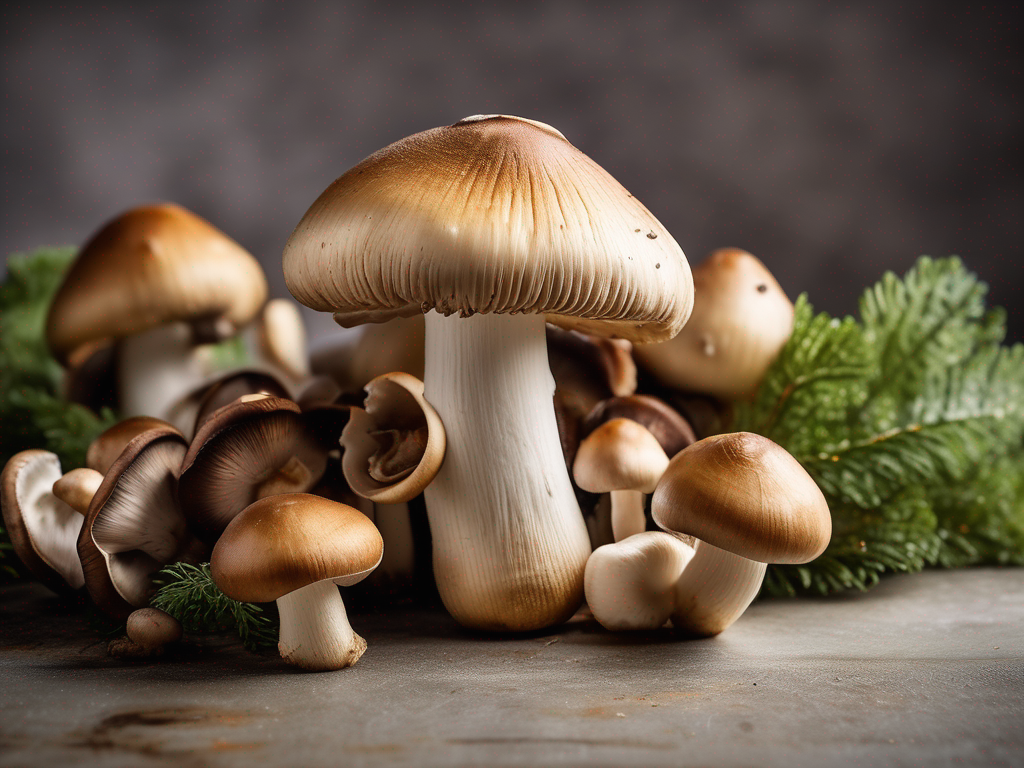
The Best Way to Store Fresh Mushrooms for Maximum Freshness
Get Your Free Food Safety Cheat Sheet
30 most common foods with instant answers. Print it and stick it on your fridge—completely free!
The Best Way to Store Fresh Mushrooms for Maximum Freshness
Fresh mushrooms are a versatile and delicious ingredient that can elevate a wide range of dishes, from savory stir-fries to creamy risottos. However, to fully enjoy the flavor and texture of mushrooms, proper storage is essential. Improper storage can lead to spoilage, loss of flavor, and potential food safety risks. In this comprehensive guide, we will explore the best practices for storing fresh mushrooms to ensure maximum freshness and quality. (Fresh mushrooms)
Understanding the Shelf Life of Fresh Mushrooms
Before delving into the specifics of storing fresh mushrooms, it's important to understand the typical shelf life of these delicate fungi. Fresh mushrooms have a relatively short shelf life compared to other vegetables, lasting anywhere from 5 to 7 days when stored properly. Factors such as variety, freshness at purchase, and storage conditions can all impact the longevity of mushrooms.
Factors Affecting Mushroom Shelf Life
Several factors can influence the shelf life of fresh mushrooms:
- Variety: Different types of mushrooms, such as button mushrooms, shiitake, or portobello, may have varying shelf lives.
- Freshness: Mushrooms that are purchased fresh and firm will generally last longer than those that are already showing signs of deterioration.
- Storage Conditions: Proper storage is crucial to extending the shelf life of fresh mushrooms.
Best Practices for Storing Fresh Mushrooms
Proper storage is key to preserving the freshness and flavor of mushrooms. Follow these guidelines to ensure your mushrooms stay fresh for as long as possible:
1. Choose the Right Packaging
When purchasing fresh mushrooms, opt for packages that are well-sealed and free of moisture. Avoid containers with condensation, as this can promote mold growth and spoilage. If possible, choose mushrooms that are sold loose and select firm, dry specimens.
2. Store in the Refrigerator
Fresh mushrooms should always be stored in the refrigerator to slow down the growth of bacteria and mold. Follow these steps for optimal refrigeration:
- Place the mushrooms in a paper bag or a breathable container to prevent moisture buildup.
- Avoid storing mushrooms in airtight plastic bags, as they can cause the mushrooms to sweat and turn slimy.
3. Keep Mushrooms Dry
Excess moisture is the enemy of fresh mushrooms, as it can lead to rapid deterioration. To keep mushrooms dry during storage:
- Avoid washing mushrooms before storing them, as moisture can accelerate spoilage.
- If needed, gently brush off any dirt or debris with a damp paper towel before refrigerating.
4. Store Mushrooms Properly
Proper storage is crucial to maintaining the quality of fresh mushrooms. Follow these tips for storing mushrooms in the refrigerator:
- Place the mushrooms in the crisper drawer, where the humidity levels are slightly higher than the rest of the refrigerator.
- Avoid storing mushrooms near foods with strong odors, as mushrooms can easily absorb smells.
5. Check and Use Mushrooms Promptly
Regularly inspect your mushrooms for any signs of spoilage, such as sliminess, discoloration, or a foul odor. Use mushrooms promptly to ensure optimal freshness and flavor.
Conclusion
By following these best practices for storing fresh mushrooms, you can extend their shelf life and enjoy their delicious flavor in your favorite recipes. Remember to choose high-quality mushrooms, store them in the refrigerator, keep them dry, and check them regularly for freshness. With proper storage techniques, you can savor the taste of fresh mushrooms for longer periods and reduce food waste. [Fresh mushrooms](/food/fresh mushrooms) are a delightful ingredient that adds depth and umami to a variety of dishes, so make the most of them by storing them correctly. (Fresh mushrooms)
Authoritative Food Safety References
These agencies and university labs inform every tip and health precaution we publish.
USDA FoodKeeper – Cold Storage Guidelines
Official refrigerator, freezer, and pantry timelines maintained by the U.S. Department of Agriculture.
Visit USDA FoodKeeperFDA Produce Safety Rule & Grower Guidance
Field-to-fridge handling practices that prevent contamination of fruits, vegetables, and leafy greens.
Visit FDA Produce SafetyCDC Foodborne Illness Prevention Hub
Surveillance-backed guidance on pathogens, symptoms, and steps to reduce foodborne illness risk.
Visit CDC Food SafetyUC Davis Postharvest Technology Center
University research detailing optimal storage atmospheres for produce after harvest.
Visit UC Davis PostharvestPenn State Extension – Home Food Preservation & Safety
Peer-reviewed extension bulletins on safe canning, chilling, and reheating practices.
Visit Penn State ExtensionGet Your Free Food Safety Cheat Sheet
30 most common foods with instant answers. Print it and stick it on your fridge—completely free! Want more? Upgrade to the complete guide with 70+ foods.
Scan your food directly and get instant safety info using our AI-powered camera feature.